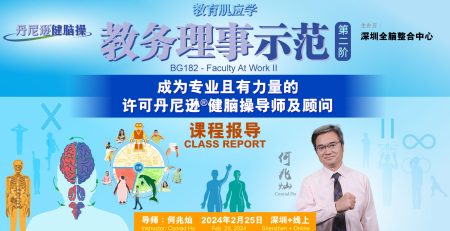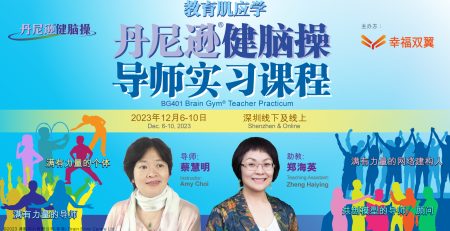Endless Problems to Tackle
by Conrad Ho in the early morning of 21 November 2018 at Suzhou, China
Recently, I have facilitated a balance in which I gained a lot of insights. The following was the story to be shared with readers.
The client had noticed her unique circumstances for many years; had taken various personal growth courses from different disciplines for many years; and has approached many professionals to do case sessions for many years. She has reportedly spent a lot of determined efforts; invested much time and money; got important progresses; was aware of the path she had already covered and which path she would need to take. However, at the same time, she said that she was still feeling blank and numb, frequently day-dreaming and could not sleep well at night……
After hearing her account, I felt that something was not right. It did not sound like having major progress, despite her saying so. A hypothesis immediately popped up in my mind: she has been working hard for her own personal growth without accessing all the different parts in her self.
The first clue was that she constantly described what her ideal state was, in a very well-organized manner, indicating that she had reiterated it in her mind for many times. However, she had not thought it through clearly how to realize it step by step. She had access to the part for long-term planning, but not to the part for short-term actions.
The second clue was that she had depicted an important event a few years ago. After receiving this heavy blow, various “problems” appeared one after the other, such as headache, insomnia, numbness, withdrawal, and so on. Then, she repeatedly talked about how comfortable, smooth, peaceful and normal it was in the past. She wished to go back to the good old days, but mentioned nothing about what could be done in the moment. She had access to the part handling the past but not to the part handling the present.
The third clue was that she explained how she had been avoiding dealing with these “issues”, by either doing nothing or just repeating what she had already been doing, never making any new moves. She said it herself that she knew she was deceiving herself as well as others, trying to create a sense of unchanging condition in this way, to make herself more comfortable. However, her internal environment is indeed changing (at least her age is continuously increasing), and the external environment is definitely changing (at least, the age of everyone is continuously increasing)! She had access to the part which was non-changing, but not to the part that was changing.
The fourth clue was that she had expressed her heavy reliance on the judgement in her mind to lead her daily life. She would approach things that was judged to be good; do things that was judged to be proper; hang around with people whom was judged to have warm hearts……and so on. However, she did not feel with her heart, whether she felt comfortable while approaching good things, happy while doing proper things, and at ease while hanging around with people of warm hearts. She had access to the part which was operating on concepts and theories, but not to the part which was on feelings and practice.
In a more straight-forward language that is more readily understandable, a person can have access to the brain but not to the heart; to logical reasoning but not to emotions; to the arms and hands but not to the legs and feet; to factual reality but not to creative imagination; to pain but not to joy…
With access to all these parts but not to the other parts, the client was exhibiting “symptoms” as follows:
- She had all kinds of blind spots – she could not hear well the sound coming from the lower right corner; seldom looked behind her; sense tactile stimulations on her torso too well; think too clearly; and stop from day-dreaming.
- She had many traumatic experiences, but could not recall them; the memory of her childhood from zero to several years of age was basically irretreivable.
- She had worked very hard to get better, and believed she was already much better, but there were still much room for improvement. She had the feeling that there were endless problems to tackle.
 If Conrad’s judgments, guesses, and hypotheses are correct, such “symptoms” are easily understandable. Those areas related to the parts to which there are no access, blind spots will develop, and related memories may become irretreivable. Say, the area needed to be cleaned is 100% but 50% of the area is inaccessible. Though the cleaner is very diligent and does his cleaning thoroughly, he can only take care of half of the area, and the remaining half is unattended. No matter how much effort is made, the whole area will not be clean. 50% of the area will become dirtier and dirtier. Smell and dust will spread to the cleaned area. Mice, cockroaches, spiders, etc. will crawl over, too! Overall, the whole area cannot be clean. This is the situation the client is facing, feeling that there are endless problems to tackle.
If Conrad’s judgments, guesses, and hypotheses are correct, such “symptoms” are easily understandable. Those areas related to the parts to which there are no access, blind spots will develop, and related memories may become irretreivable. Say, the area needed to be cleaned is 100% but 50% of the area is inaccessible. Though the cleaner is very diligent and does his cleaning thoroughly, he can only take care of half of the area, and the remaining half is unattended. No matter how much effort is made, the whole area will not be clean. 50% of the area will become dirtier and dirtier. Smell and dust will spread to the cleaned area. Mice, cockroaches, spiders, etc. will crawl over, too! Overall, the whole area cannot be clean. This is the situation the client is facing, feeling that there are endless problems to tackle.





